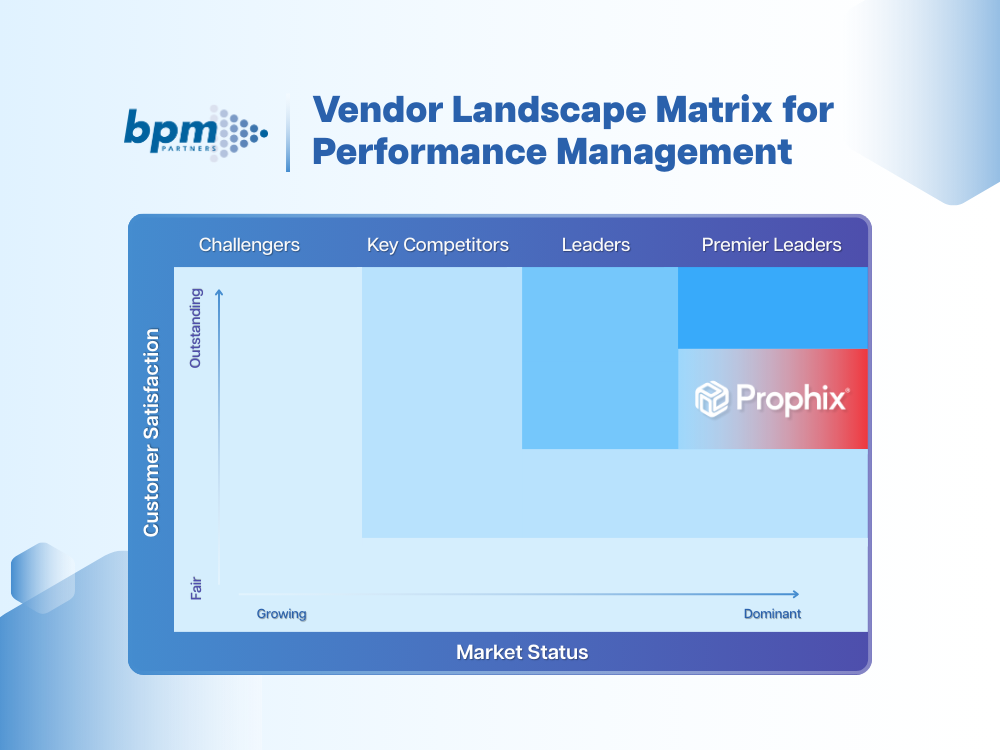Download Analyst Report
What’s Better? FP&A Software versus Excel
Less than 50% of companies perform budgeting and planning processes effectively.
October 6, 2023According to a study conducted by Ventana Research, less than 50% of companies perform budgeting and planning processes effectively.
Why? Excel is the most common ‘software’ that finance departments use.
Finance teams have relied on spreadsheets since Excel made its debut in the 80s. According to CFO.com, the average FP&A employee spends 75% of their time gathering data and administering the process, which leaves only 25% of their time for the value-added analysis that drives business performance.
It’s clear that there are significant time-savings and value-added by using dedicated FP&A software to budget, report, and plan so finance leaders have the time to do what they do best: turn data into insights.
In this article, we’ll look at what’s better: FP&A software versus spreadsheets. You’ll learn:
What is FP&A software?
FP&A software is for CFOs, finance leaders, and decision-makers to manage reporting, budgeting, forecasting, and planning and track the financial health of the business.
With FP&A software, you can:
- Streamline your budget management
- Automate repetitive processes
- Integrate your data directly from the source
- Access real-time data points
- Create comprehensive, insightful forecasts
- Conduct complex data analysis
FP&A software is a critical component of financial performance management.
What is financial performance management?
Financial performance management (FPM) is the way a company manages financial processes across the entire organization. Financial performance management includes budgeting and planning, reporting and analytics, financial consolidation, and intercompany management.
Having financial performance management software often signals financial maturity, too. If you manage your budget in a spreadsheet, it signals a ‘low’ level of financial maturity. Why? Because spreadsheets are a static tool that you can’t scale as your company – and reporting needs – grow.
Now that we’ve established what FP&A software is, let’s look at the differences between FP&A software and Excel.
Difference between FP&A software and Excel
Most companies make the switch to FP&A software because there are limitations in Excel or spreadsheets, including: investment (time and money), ease of use, automation and integration, flexibility and scale, and data security.
Let’s look at the differences in the two across those categories.
Investment in time and money
FP&A software
An investment (in time and money) is required but guarantees greater accuracy and efficiency for your financial data moving forward.
Spreadsheets
Free but there is significant time invested into maintenance and updates to ensure data accuracy.
Ease of use
FP&A software
Training is required with FP&A software, but existing finance knowledge and implementation programs ensure an efficient and organized application is up and running for all users to do their best work.
Spreadsheets
Easy to use and requires minimal training but can become complicated with template maintenance and continuous data validation to ensure no errors from manual entry or copy/paste that could break your entire workbook.
Automation and integration
FP&A software
Data is pulled from your systems and automatically refreshed in FP&A software. Pre-built integrations with your accounting, ERP, CRM or HRIS software automate data collection.
Spreadsheets
Manual copy/paste data entry into spreadsheets from your data source, adding columns, rows, and formulas that can impact the integrity of your workbook.
Flexibility and scale
FP&A software
Highly customizable to meet your unique reporting requirements.
Spreadsheets
Limited flexibility for scale or customization.
Data security
FP&A software
Security audits and compliance standards are built-in to FP&A software to ensure data integrity and security and a complete audit trail.
Spreadsheets
Limitations to version control and history make audit compliance difficult.
When you think about budgeting, reporting, and analysis, it’s a multi-step process with a number of cross-functional team members and moving parts, which is hard to carry-out in a spreadsheet.
So, what are the benefits of FP&A software?
Benefits of FP&A software
Companies don’t switch to FP&A software just because of the limitations of a spreadsheet. FP&A software offers more than a spreadsheet, including:
- Easy to deploy
- Streamlined integrations with other systems
- Sophisticated data analysis
- Increased productivity
Let’s look at the benefits of FP&A software in more detail.
Easy to deploy
Cloud-native FP&A software only requires a web browser. There is no requirement to install the latest or correct version or install spreadsheet add-ins. Everything you need to budget, plan, and report is available via web browser and your sign-in credentials. What’s more, you can access FP&A software from different devices and access the latest report, update, or data, versus a spreadsheet saved on someone’s desktop.
Streamlined integrations with other systems
Most financial planning involves importing data from your account system, HRIS, or ERP. With FP&A software, these integrations are automated, so your data collection is done automatically – no manual import required. This means your subsequent reports are automatically updated as accounts are added to your Chart of Accounts.
Sophisticated data analysis
FP&A software offers ad hoc queries, high-level general ledger data by account, department, or project, or drill-down into underlying transactions. This level of granularity means finance leaders can perform sophisticated analysis. Top-down planning is also a standard feature in FP&A software, meaning yearly data across months or costs across departments based on historical data is automatically done with built-in functionality. A final example is that new accounts or departments appear automatically in reports, requiring no manual adjustments or input.
Dive deeper into your data with ad hoc analysis
Increased productivity
Spreadsheets require a lot of manual time and effort to update. As a reminder, 75% of finance leaders spend their time manually gathering data and setting up reports in spreadsheets when that time could go towards value-add tasks.
FP&A software reduces your need for manual, time-consuming tasks like data entry and pivot tables to free up time to look at your data that informs business decisions.
It’s not a case of spreadsheets or no-spreadsheets
It’s not the case of FP&A software or Excel. Spreadsheets still have a place in the Office of Finance, but they shouldn’t be used as a single source of truth for budgeting, planning, and reporting.
Most finance leaders use spreadsheets every day for some, half, or all their finance processes. But the hesitation to move to FP&A software shouldn’t overpower the need to make the move.
In summary, FP&A software will transform the way you work. You’ll have more time for analysis and value-add tasks that move the needle on business performance. Saved time is saved money. A comprehensive view of your business from FP&A software, and more time in your schedule, means you and your team are free to focus on what matters most to your business.





